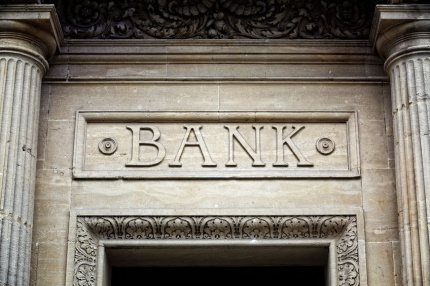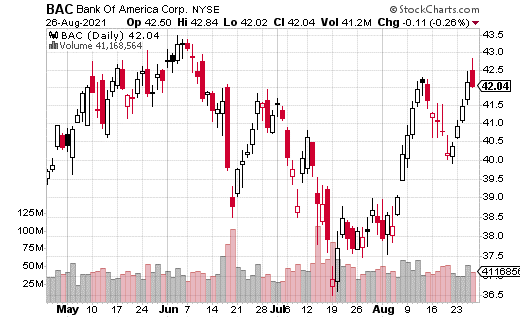The banking sector can be challenging to trade when interest rates are near zero. On the one hand, banks tend to earn more profits when interest rates are higher. On the other hand, if low interest rates lead to economic improvement, that’s good news for banks.

The reason ultra-low interest rates are typically not the best environment for banks is because higher interest rates lead to higher interest rate spreads (the difference between what a bank pays for money and what it loans out at), which is a primary source of profit for the industry.
However, low interest rates can help lead to economic growth—undoubtedly good for banks because it generally leads to more loans and more demand for banking services.
So, what does it all mean for bank stocks? Is now a good time to buy/own them?
One strategy to use in this situation is the covered call. A covered call involves buying a stock and selling a call (usually at a higher strike). This position can allow the investor to take advantage of the bank stocks drifting higher while also generating cash flow from the short call.
An excellent example of this strategy occurred last week in Bank of America (BAC). BAC is the second-largest bank in the US and is a relatively decent proxy for the banking sector.
With BAC trading at $42.34, a trader purchased 430,000 shares while simultaneously selling 4,300 December 47 calls for $0.82. The trade brought a little more than $350,000 in cash from the call premiums, working out to roughly 2% return on cash (or about 5% on an annualized basis).
The thing is, BAC does pay a dividend that yields 2%. However, that dividend yield is for the entire year, while this trade’s 2% comes in about four and a half months. In other words, this strategy is effectively doubling the annual dividend yield in just over four months.
What’s more, by selling the 47 calls, the gains on the stock aren’t capped out until $47 in the share price. That’s over 10% higher than the price of the stock at the time of the trade. A covered call strategy allows for share appreciation and a return on cash, which is one reason why they are so popular in general.
A trader can choose to increase the return on cash by using a closer strike price to the stock price. In that case, the upside potential of the stock is capped at a lower level. It all depends on the trader’s goal (higher return on cash versus higher share appreciation potential).

As of this writing, BAC is up 39% year-to-date, so the strategist may be looking to take advantage of the stock’s upward momentum. If the stock returns had been relatively flat, the trader might have chosen to go with a closer strike and higher premiums to sell instead.





